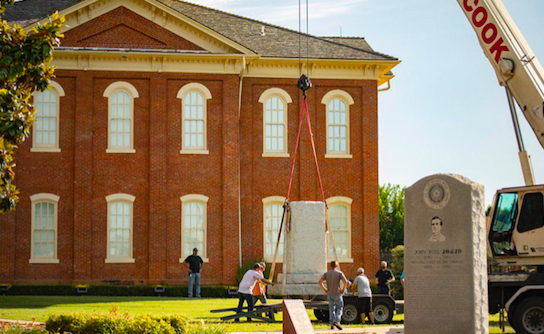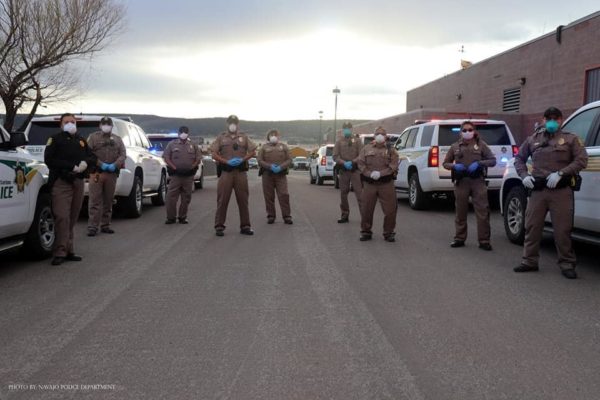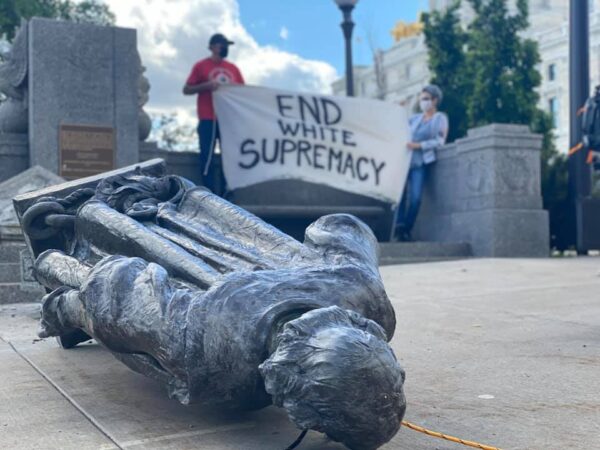Currents
- Type: Default
- Ad Visibility: Show Article Ads
- Reader Survey Question: No Question
- Video Poster: https://nativenewsonline.net/images/10_Years_Logo.png
Legislation follows Trump Administration attacks on Mashpee Wampanoag Tribe
WASHINGTON — Congresswoman Deb Haaland (D-NM) and Congressman Joe Kennedy III (D-MA) on Thursday introduced the Tribal Reservation Pandemic Protection Act, which would prohibit the Trump administration from threatening tribal reservation lands in the midst of the COVID-19 pandemic.
- Details
- By Native News Online Staff
- Type: Default
- Ad Visibility: Show Article Ads
- Reader Survey Question: No Question
- Video Poster: https://nativenewsonline.net/images/10_Years_Logo.png
TAHLEQUAH, Okla. — Following a nationwide wave to remove inappropriate statues and monuments tied to a messy racial past, the Cherokee Nation on Saturday removed two Confederate monuments near its tribal headquarters.
- Details
- By Native News Online Staff
- Type: Default
- Ad Visibility: Show Article Ads
- Reader Survey Question: No Question
- Video Poster: https://nativenewsonline.net/images/10_Years_Logo.png
WINDOW ROCK, Ariz. — On Saturday night, the Navajo Nation reported 84 new cases of COVID-19 for the Navajo Nation and five more deaths. The total number of deaths has reached 308 as of Saturday. Reports from 11 health care facilities indicate that approximately 3,131 individuals have recovered from COVID-19, with one health care facility report still pending.
- Details
- By Native News Online Staff
- Type: Default
- Ad Visibility: Show Article Ads
- Reader Survey Question: No Question
- Video Poster: https://nativenewsonline.net/images/10_Years_Logo.png
WASHINGTON — In the wake of protests in the aftermath of George Floyd’s police killing in Minneapolis, a movement to remove Confederate soldiers and Christopher Columbus statues has spread in several cities.
- Details
- By Native News Online Staff
- Type: Default
- Ad Visibility: Show Article Ads
- Reader Survey Question: No Question
- Video Poster: https://nativenewsonline.net/images/10_Years_Logo.png
3,094 new recoveries, 92 new cases, and five more deaths related to COVID-19 reported
WINDOW ROCK, Ariz. — On Friday night, the Navajo Nation reported five more deaths from COVID-19, which brings the total death toll to 303.
- Details
- By Native News Online Staff
- Type: Default
- Ad Visibility: Show Article Ads
- Reader Survey Question: No Question
- Video Poster: https://nativenewsonline.net/images/10_Years_Logo.png
WASHINGTON — U.S. District Judge Amit Mehta rejected the Prairie Band Potawatomi Nation’s motion to block the Treasury Department from sending out the CARES Act relief until it takes a second look at the breakdown per tribe.
- Details
- By Native News Online Staff
- Type: Default
- Ad Visibility: Show Article Ads
- Reader Survey Question: No Question
- Video Poster: https://nativenewsonline.net/images/10_Years_Logo.png
MONROE, Mich. — An online movement to remove a statue of General George Armstrong Custer in southeast Michigan is gaining traction.
- Details
- By Native News Online Staff
- Type: Default
- Ad Visibility: Show Article Ads
- Reader Survey Question: No Question
- Video Poster: https://nativenewsonline.net/images/10_Years_Logo.png
MONROE, Mich. — An online movement to remove a statue of General George Armstrong Custer in southeast Michigan is gaining traction.
- Details
- By Native News Online Staff
- Type: Default
- Ad Visibility: Show Article Ads
- Reader Survey Question: No Question
- Video Poster: https://nativenewsonline.net/images/10_Years_Logo.png
WINDOW ROCK, Ariz. — The Navajo Nation on Thursday filed a lawsuit against Dineh Benally, Native American Agriculture Company, and Navajo Gold Company to stop illegal growth, possession and distribution of industrial hemp on the Tribe’s reservation.
- Details
- By Native News Online Staff








